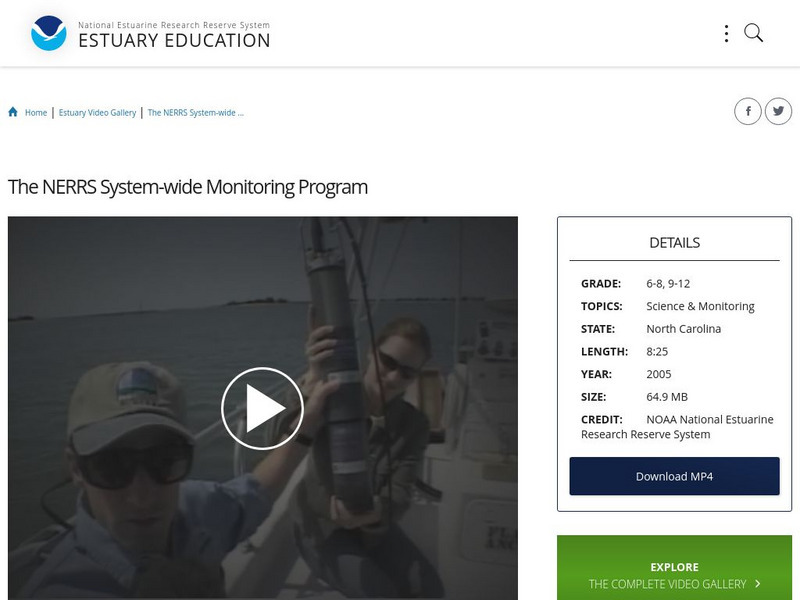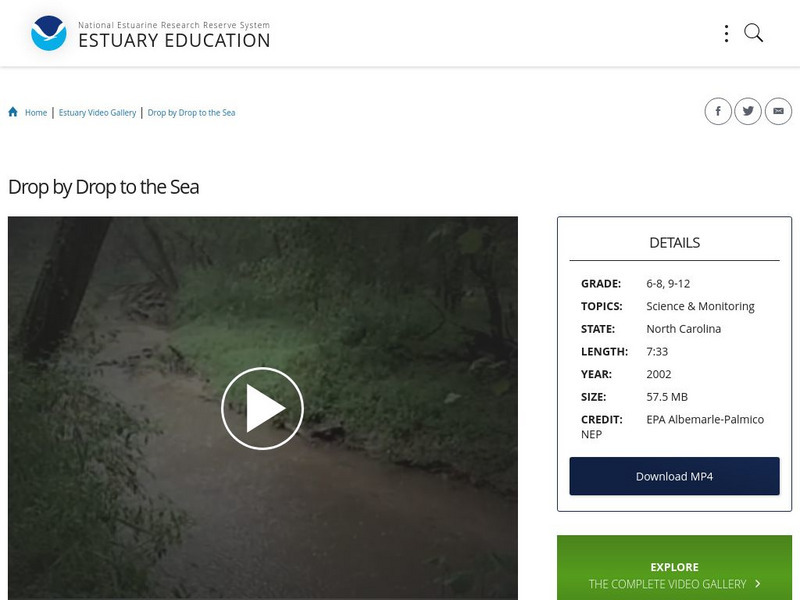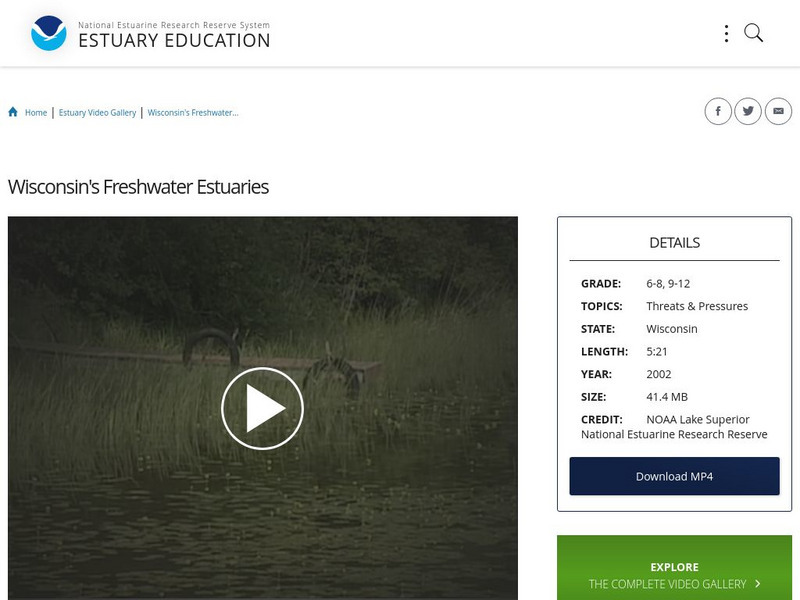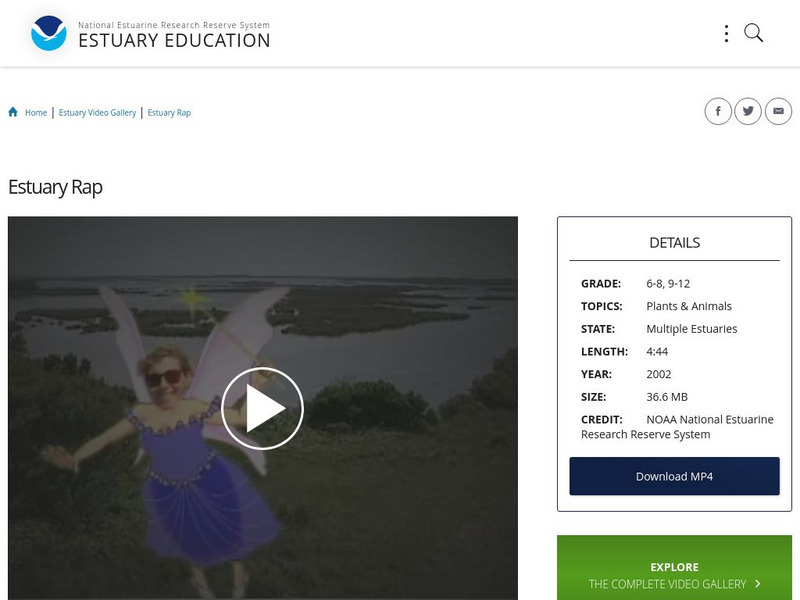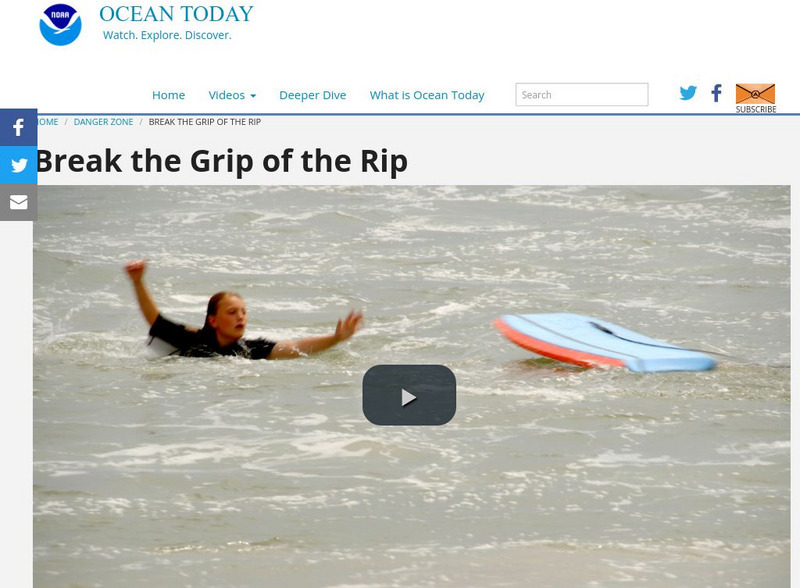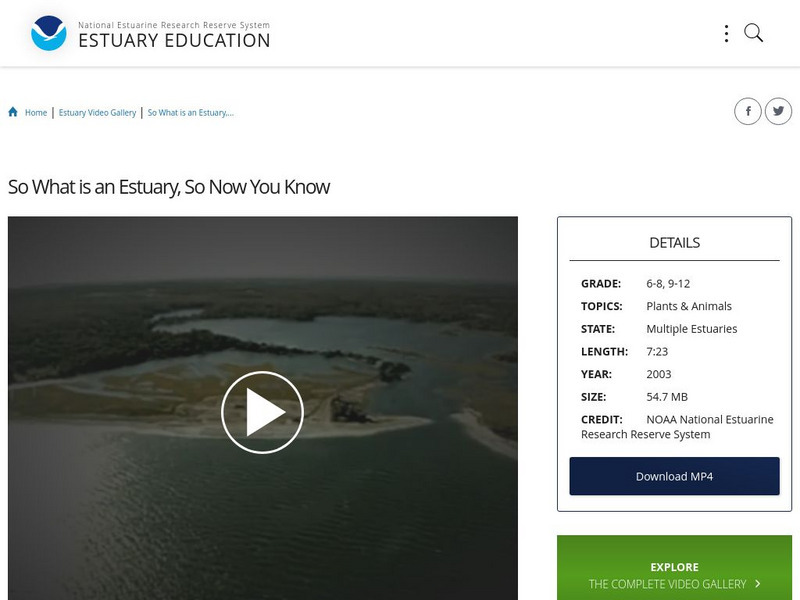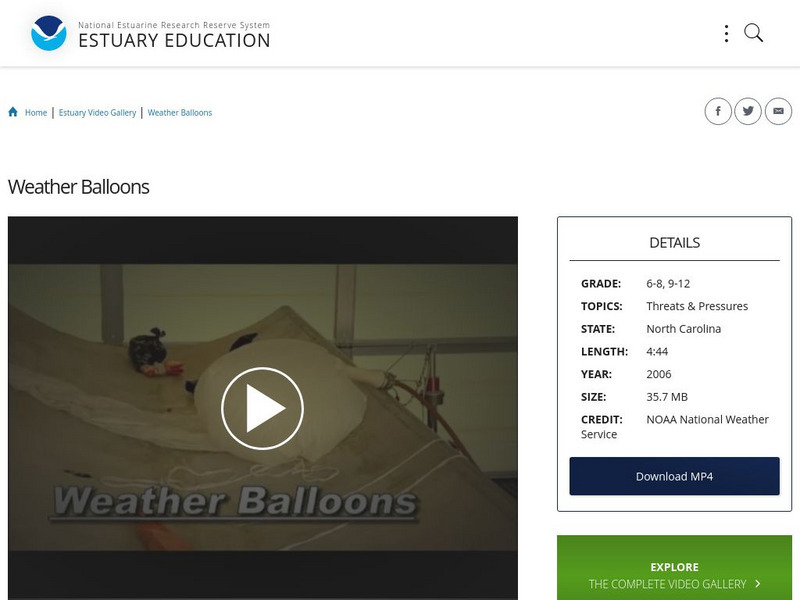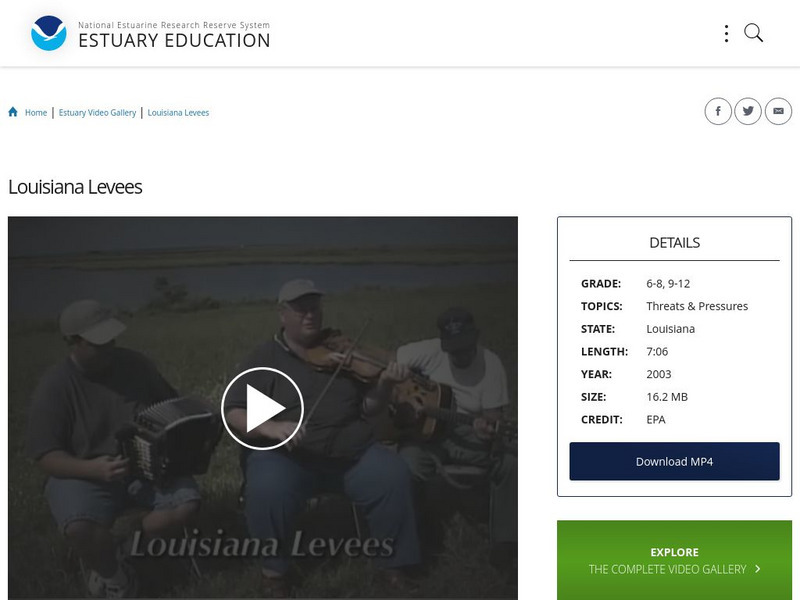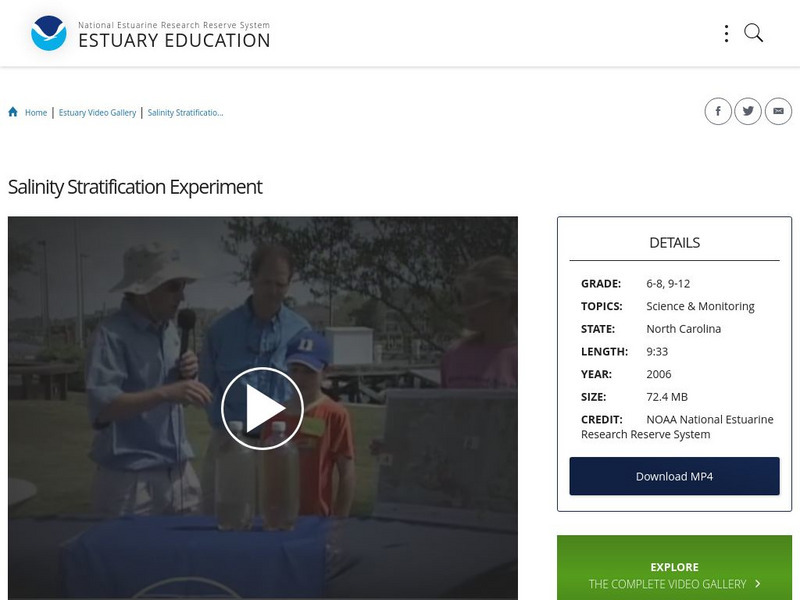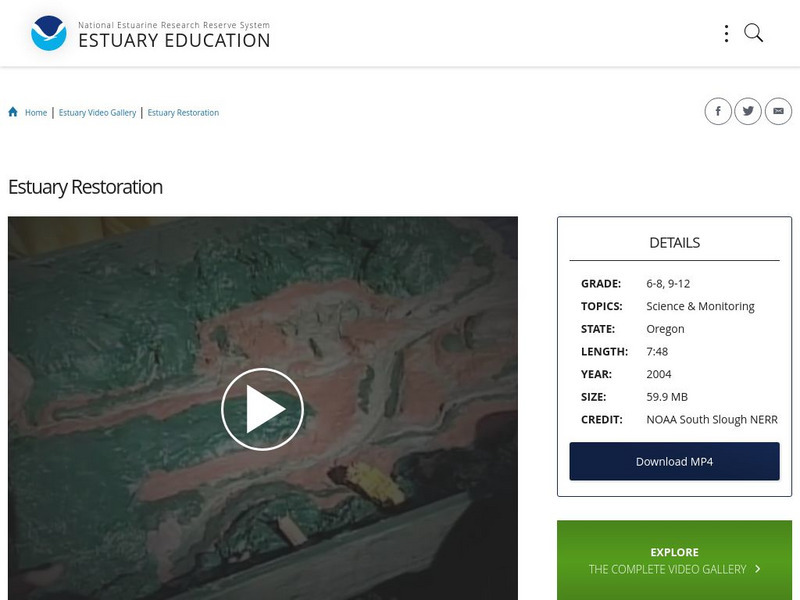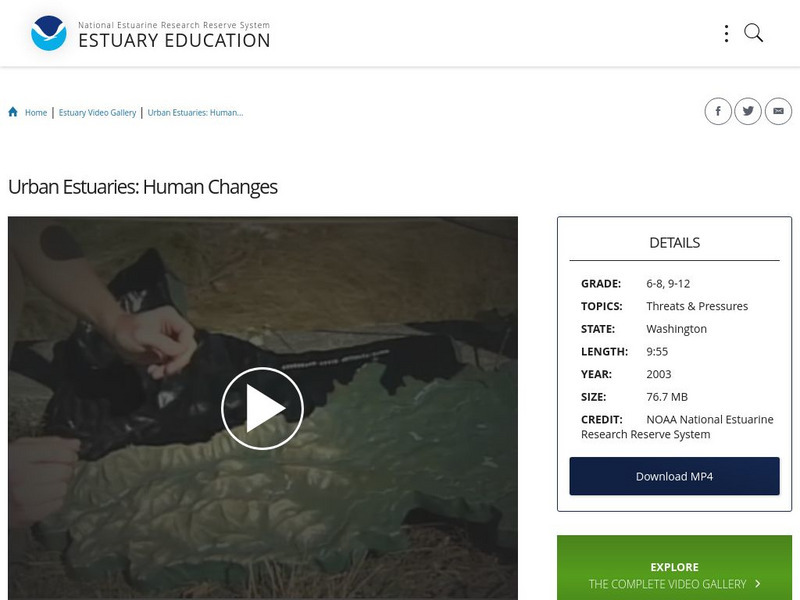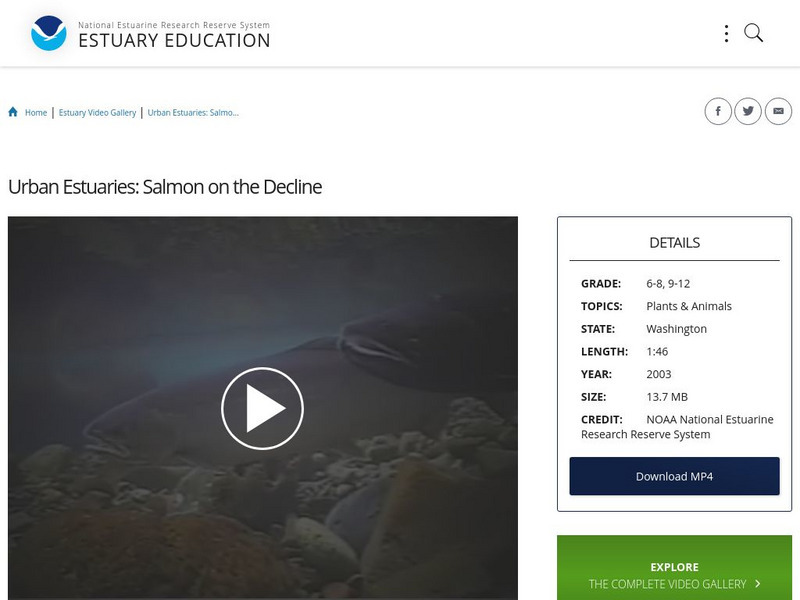Hi, what do you want to do?
NOAA
Noaa: Estuary Education: Score for Oysters
Score one for oysters. Meet two marine ecosystem experts and learn how oyster shells can be recycled to make a new habitat for young oysters. [8:12]
NOAA
Noaa: Estuary Education: Turtle Trails
All species of sea turtles are threatened or endangered. Learn how scientists are studying these animals using high tech equipment. [9:19]
NOAA
Noaa: Estuary Education: Turtle Hospital
All species of sea turtles are threatened or endangered. Meet a scientist who works with sick or injured sea turtles and find out what happens in a turtle hospital. [9:08]
NOAA
Noaa: Estuary Education: The Nerrs System Wide Monitoring Program
Learn about the SWMP Program (System Wide Monitoring Program) and see how high-tech underwater equipment helps keep track of conditions in the estuary at all times. [8:25]
NOAA
Noaa: Estuary Education: Drop by Drop to the Sea
Follow rain running off parking lots and roads in central North Carolina on a journey to the estuary hundreds of miles away. Good footage showing runoff from areas of development and beautiful estuary montage at the end. [7:30]
NOAA
Noaa: Estuary Education: Wisconsin's Freshwater Estuaries
Find out about Wisconsin's delicate freshwater estuary environments along Lake Superior. Includes ecosystems in the Apostle Islands in addition to the Flag, Cranberry, Bark, Sand, Rasberry, Lost Creek, Whittlesey Creek, Fish Creek,...
NOAA
Noaa: Estuary Education: Estuary Rap
Student rappers use humor and student interview clips to explain the importance of an estuary. [4:43]
NOAA
Noaa: The Ocean Today: Break the Grip of the Rip
Find out the dangers of rip currents, how to spot them, and how to stay safe in the presence of them. [2:14]
NOAA
Noaa: Estuary Education: So What Is an Estuary, So Now You Know
Produced by the Association of National Estuary Programs as a fun explanation of what estuaries are and why they are important. [7:23]
NOAA
Noaa: Submarine Bathymetry of Pacific Ring of Fire
What would the ring of fire look like if the oceans were removed? This animation, based on data gathered during a Ring of Fire expedition reveals the numerous volcanos which make up this area.
NOAA
Noaa: Estuary Education: Weather Balloons
See how weather forecasting and weather research are conducted using weather balloons. Find out how these floating instruments work, and what scientific the data they send back to meteorologists. [4:44]
NOAA
Noaa: Estuary Education: Louisiana Levees
Interview with Windell Curole, Levee Manager, South Lafourche Parrish one year before Hurricane Katrina. He discusses living in and around the estuary, and how the levee system affects the water quality there. [7:06]
NOAA
Noaa: Estuary Education: Salinity Stratification Experiment
Learn a little about salinity differences in the estuary and watch a really cool but simple experiment to demonstrate salinity stratification. You can try this at home! [9:33]
NOAA
Noaa: Estuary Education: Estuary Restoration
A look at how and why the South Slough estuary has been changed by human use, and how we are now trying to rebuild or restore the estuary to original condition. Specialized techniques for restoration include use of high explosives. [7:48]
NOAA
Noaa: Estuary Education: Water Quality Specifics: Measuring Nitrogen
See how students use classroom tools to measure estuarine water quality. Students sample estuary water for nitrogen using the Colorimeter. [3:03]
NOAA
Noaa: Estuary Education: Water Quality Specifics: Using a Hydrometer
Learn how students can use classroom tools to measure estuarine water quality. Students sample ocean, estuary and tap water for salinity using the Hydrometer. [5:09]
NOAA
Noaa: Estuary Education: Urban Estuaries: Human Changes
Often humans living in close contact with an estuary want to fix it. We learn about the changes humans made to the Duwamish Estuary in Seattle. and how many groups are seeking to reverse these changes. [9:55]
NOAA
Noaa: Estuary Education: Urban Estuaries: Toxic Legacy
Pollution in urban estuaries is a serious problem. Cleaning up this toxic legacy is a long-term and expensive proposition. [7:05]
NOAA
Noaa: Estuary Education: Turtle Tales
Meet a middle-school student who works to protect turtles found in the estuary. [3:16]
NOAA
Noaa: Ocean Facts: What Is Eutrophication?
Explains what eutrophication is and the extent of the problem in the United States. Discusses the causes, impact, and what can be done to combat it. The video provides a short overview of the topic and is accompanied by a transcript. [1:04]
NOAA
Noaa: Estuary Education: Black Skimmers
Footage of Black Skimmers fishing on an estuarine creek in North Carolina. This clip shows, in slow motion, how the birds skim from the surface of the water to get their food. [1:03]
NOAA
Noaa: Estuary Education: Favorite Estuary Animals
Excited second graders describe their favorite estuary animals, and show off some artwork depicting the creatures. [2:32]
NOAA
Noaa: Estuary Education: Bulkheads Cause Problems for Horseshoe Crabs
Bulkheads, sea walls, and other hardened shoreline structures cause problems for animals like horseshoe crabs which crawl up on the shore to spawn. Middle school students perform a dramatic skit to show how these bulkheads can affect...
NOAA
Noaa: Estuary Education: Urban Estuaries: Salmon on the Decline
A short summary of why Pacific Salmon are declining. Learn about the effects of the four H's on the estuary: habitat, hydropower dams, hatcheries, and harvest. [1:46]








